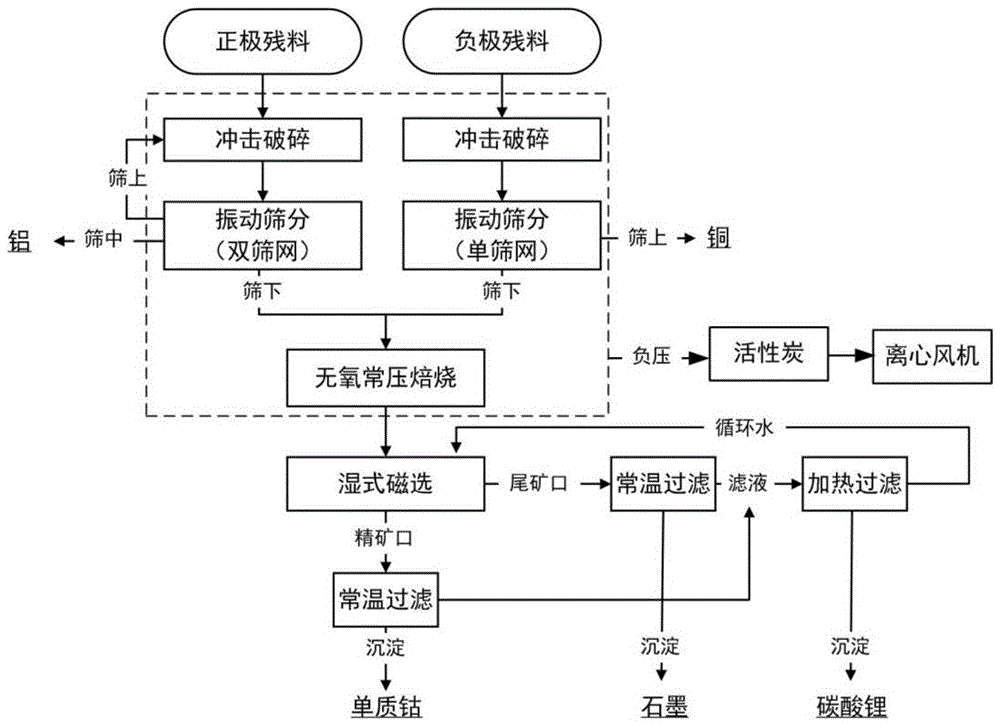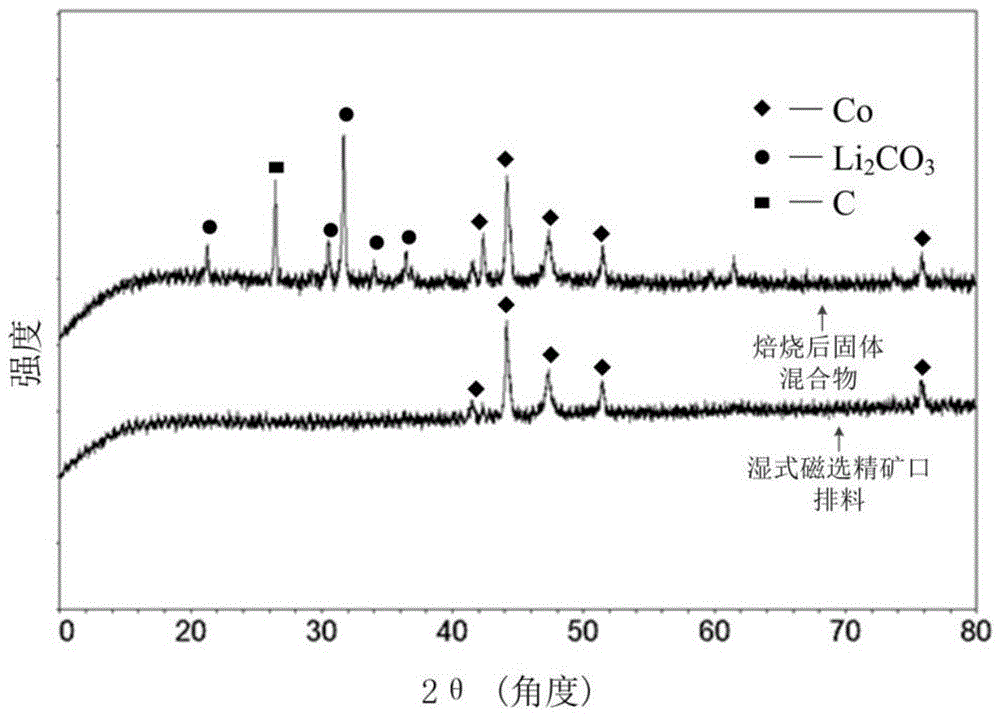Recycling method of positive and negative electrode residues of waste lithium cobaltate lithium ion battery
A lithium ion battery, lithium cobalt oxide technology, applied in the fields of environmental protection and electronic waste treatment, can solve the problems of neglecting the recycling of other resources, secondary pollution, and increase the processing cost, so as to reduce the loss of graphite materials, save costs, The effect of relaxed reaction conditions
- Summary
- Abstract
- Description
- Claims
- Application Information
AI Technical Summary
Problems solved by technology
Method used
Image
Examples
Embodiment Construction
[0031] The present invention will be described in detail below in conjunction with specific embodiments. The following examples will help those skilled in the art to further understand the present invention, but do not limit the present invention in any form. It should be noted that those skilled in the art can make several modifications and improvements without departing from the concept of the present invention. These all belong to the protection scope of the present invention.
[0032] Such as figure 1 As shown, the recycling method of positive and negative electrode residues of waste lithium cobaltate lithium ion battery uses high-speed impact crushing, vibration screening, anaerobic atmospheric pressure roasting, wet magnetic separation, variable temperature filtration and other processes to utilize waste cobalt acid Preparation of elemental cobalt, lithium carbonate and graphite powder from positive and negative electrode residues in lithium-ion batteries. It includes...
PUM
 Login to View More
Login to View More Abstract
Description
Claims
Application Information
 Login to View More
Login to View More - R&D
- Intellectual Property
- Life Sciences
- Materials
- Tech Scout
- Unparalleled Data Quality
- Higher Quality Content
- 60% Fewer Hallucinations
Browse by: Latest US Patents, China's latest patents, Technical Efficacy Thesaurus, Application Domain, Technology Topic, Popular Technical Reports.
© 2025 PatSnap. All rights reserved.Legal|Privacy policy|Modern Slavery Act Transparency Statement|Sitemap|About US| Contact US: help@patsnap.com



